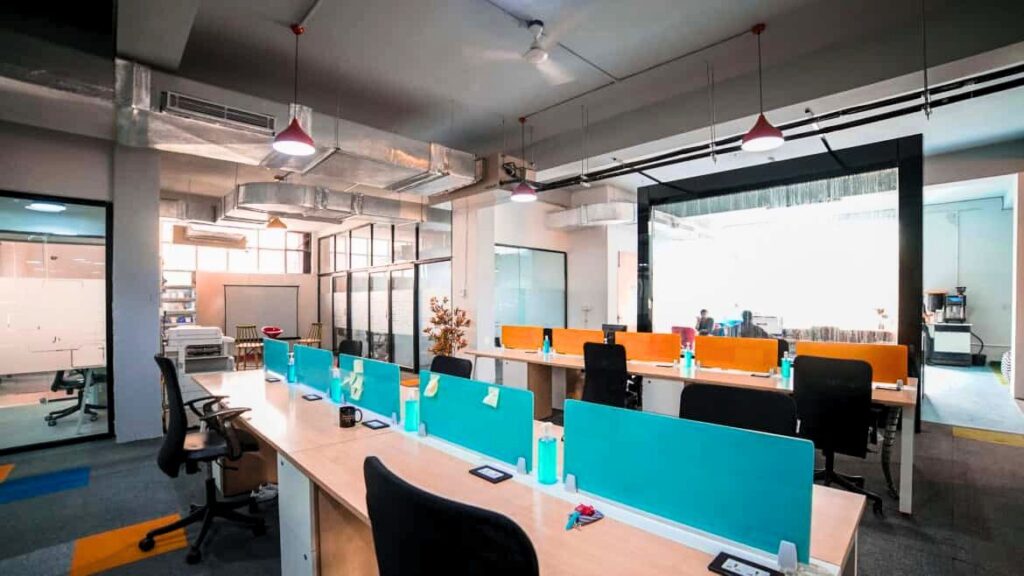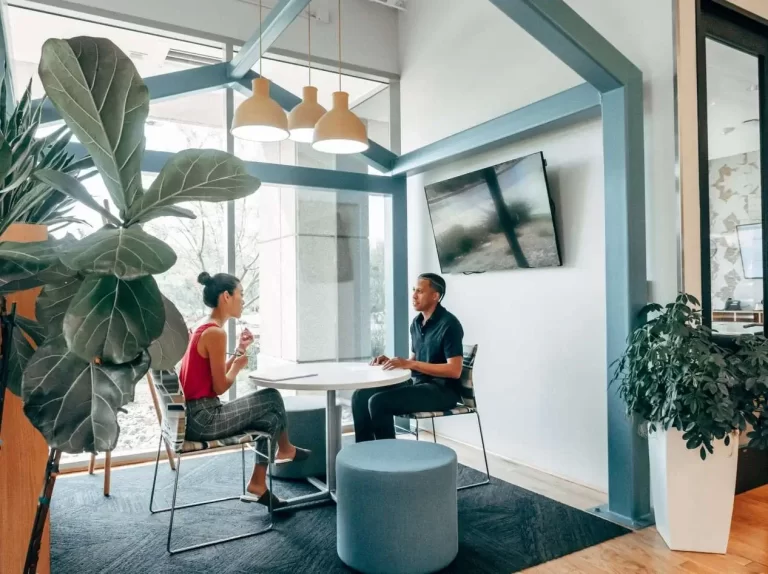Collaborative Corners: Exploring the Benefits of Shared Workspaces
In recent years, shared workspaces, also known as collaborative corners, have emerged as a popular alternative to traditional office environments. These communal spaces offer freelancers, entrepreneurs, startups, and remote workers a flexible and dynamic setting to work, collaborate, and network. From bustling coworking hubs in urban centers to tranquil retreats in scenic locales, shared workspaces have transformed the way people approach work. Let’s delve deeper into the benefits of collaborative corners and why they’re becoming the preferred choice for modern professionals.

1. Fostering Collaboration and Networking:
Shared workspaces bring together individuals from diverse backgrounds and industries, creating opportunities for collaboration and networking. In these vibrant communities, professionals can exchange ideas, seek feedback, and form valuable connections that may lead to partnerships, collaborations, or new business ventures. Whether through organized events, casual conversations, or collaborative projects, shared workspaces facilitate meaningful interactions that foster creativity and innovation.
2. Flexible and Affordable Workspace Solutions:
One of the primary advantages of shared workspaces is their flexibility and affordability. Unlike traditional office leases that require long-term commitments and hefty upfront costs, shared workspaces offer flexible membership options, including daily, weekly, monthly, or even pay-as-you-go plans. This flexibility allows individuals to tailor their workspace arrangements to suit their needs and budget, whether they require a dedicated desk, a private office, or simply access to communal areas.
3. Access to Amenities and Resources:
Shared workspaces often boast a wide range of amenities and resources designed to enhance productivity and convenience. These may include high-speed internet access, printing and scanning facilities, meeting rooms, event spaces, kitchenettes, lounge areas, and complimentary refreshments. By providing access to these amenities, shared workspaces create a conducive environment where professionals can focus on their work without worrying about logistical concerns.
4. Promoting Work-Life Balance:
For remote workers and freelancers, finding a balance between work and personal life can be challenging. Shared workspaces offer a solution by providing a dedicated workspace outside the home environment. This separation helps individuals maintain boundaries between work and leisure, reducing distractions and improving focus during working hours. Additionally, shared workspaces often host wellness programs, social events, and recreational activities to promote work-life balance and employee well-being.
5. Enhancing Productivity and Creativity:
The collaborative and stimulating environment of shared workspaces can significantly enhance productivity and creativity. Surrounded by like-minded professionals, individuals are motivated to stay focused, set goals, and strive for excellence. Moreover, the diverse mix of talents and perspectives in shared workspaces can inspire creativity, spark innovation, and offer fresh insights into challenging problems. Whether through impromptu brainstorming sessions, collaborative projects, or peer feedback, shared workspaces provide a fertile ground for personal and professional growth.
6. Reducing Isolation and Loneliness:
Working remotely or as a freelancer can sometimes lead to feelings of isolation and loneliness. Shared workspaces address this issue by providing a supportive community where individuals can connect, socialize, and share experiences. Whether it’s grabbing a coffee with fellow members, participating in networking events, or joining coworking communities online, shared workspaces offer opportunities for social interaction and camaraderie, mitigating feelings of isolation and fostering a sense of belonging.
7. Geographic Flexibility and Mobility:
Shared workspaces are not confined to a single location; they can be found in various cities, neighborhoods, and even rural areas around the world. This geographic flexibility allows professionals to work from multiple locations, travel while staying productive, and explore new environments without sacrificing their work commitments. Whether it’s a bustling metropolis, a serene coastal town, or a picturesque mountain retreat, shared workspaces offer the freedom to choose where and how you work.
In conclusion, collaborative corners or shared workspaces offer a myriad of benefits for modern professionals seeking flexibility, community, and productivity. From fostering collaboration and networking to promoting work-life balance and creativity, these dynamic environments cater to the diverse needs of individuals in today’s evolving workforce. Whether you’re a freelancer, entrepreneur, or remote worker, shared workspaces provide the ideal setting to thrive, grow, and succeed in your endeavors.






